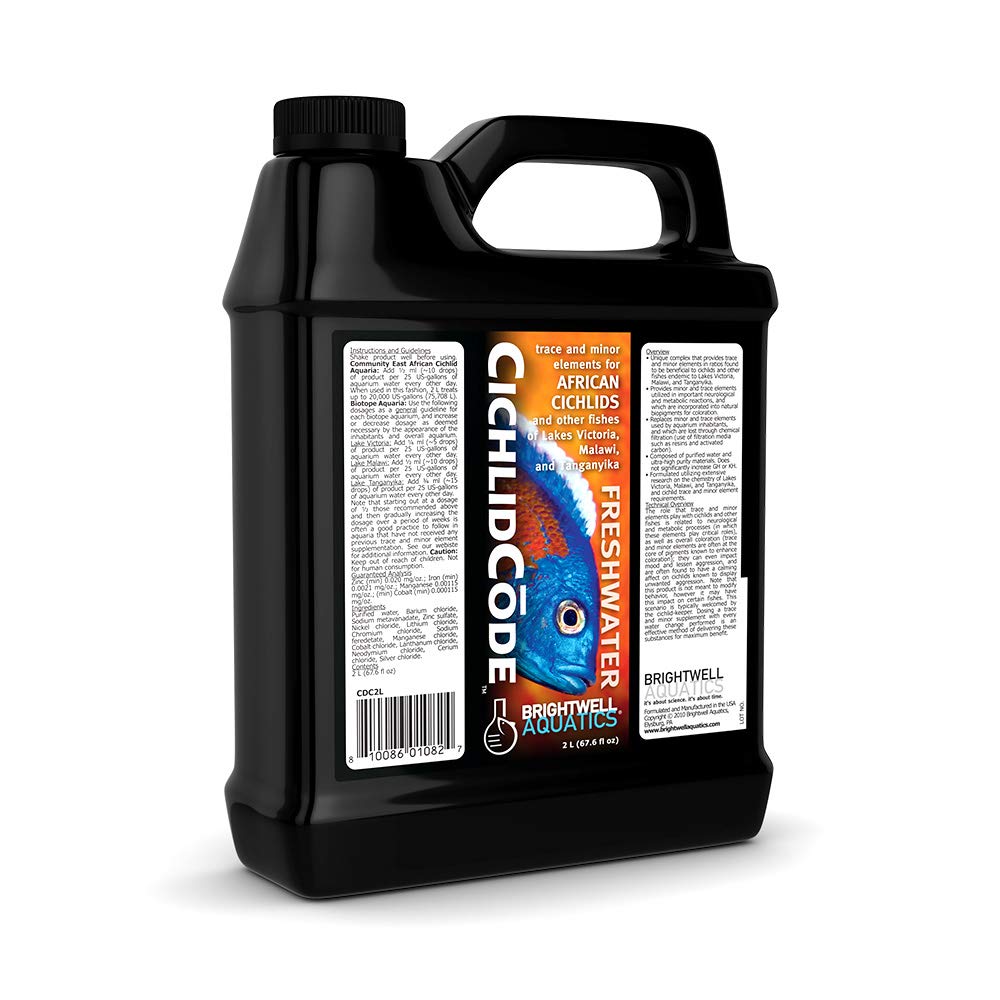Brightwell Aquatics CichlidCode - Trace and Minor Elements for African Cichlids and Fish of Lakes Victoria, Malawi, and Tanganyi
- $40.61
-
Regular price
$58.01 -
-29%
 WELCOME5: Use Code WELCOME5 for 5% OFF on your first order!
WELCOME5: Use Code WELCOME5 for 5% OFF on your first order!
Couldn't load pickup availability




Vendor: Brightwell Aquatics
Type: Water Care
Sku: WBPETB07J6VL16R
Available: Available
- No EU import duties.
- Ships within 1-2 business days.
- Ships in our fully recyclable and biodegradable signature boxes.
⚠️ California Proposition 65 Warning :
Some products sold on this website may expose you to chemicals known to the State of California to cause cancer, birth defects, or other reproductive harm.
For more information, visit www.P65Warnings.ca.gov.
Guarantee safe checkout

Brightwell Aquatics CichlidCode - Trace and Minor Elements for African Cichlids and Fish of Lakes Victoria, Malawi, and Tanganyi
The role that trace and minor elements play with cichlids and other fishes is related to neurological and metabolic processes (in which these elements play critical roles), as well as overall coloration (trace and minor elements are often at the core of pigments known to enhance coloration); they can even impact mood and lessen aggression, and are often found to have a calming effect on cichlids known to display unwanted aggression. Note that this product is not meant to modify behavior, however it may have this impact on certain fish. This scenario is typically welcomed by the cichlid-keeper. Dosing a trace and minor supplement with every water change performed is an effective method of delivering these substances for maximum benefit. The majority of East African cichlid species maintained by aquarium hobbyists have their origins in three lakes: Victoria, Malawi, and Tanganyika. Lake Victoria lies within a large but relatively shallow tectonic basin; it exhibits lower conductivity, carbonate hardness, and pH as compared to Lakes Malawi and Tanganyika, likely a result of the low-salinity runoff that is the lakes main source of water input. Lake Malawi lies within a rift, and exhibits higher conductivity, carbonate hardness, and pH than L. Victoria, but much less than those levels of L. Tanganyika; as with L. Victoria, much of the water input to L. Malawi is in the form of low-salinity runoff. It may be surprising to learn that the water chemistry of Lakes Malawi and Victoria bear a closer resemblance to one another than do Lakes Malawi and Tanganyika. Lake Tanganyika also lies within a rift valley, however appears to receive much of its water from saline springs and runoff from carbonate-rich lava deposits, and has the highest average conductivity, carbonate hardness, and pH of the three lakes. Wild-caught cichlids originating from these lakes may be gradually acclimated to conditions present in one of the lakes to which they are not endemic, though avid cichlidophiles often attempt to re-create water parameters as much as possible regardless of whether their fish are wild-caught or captive-raised.


